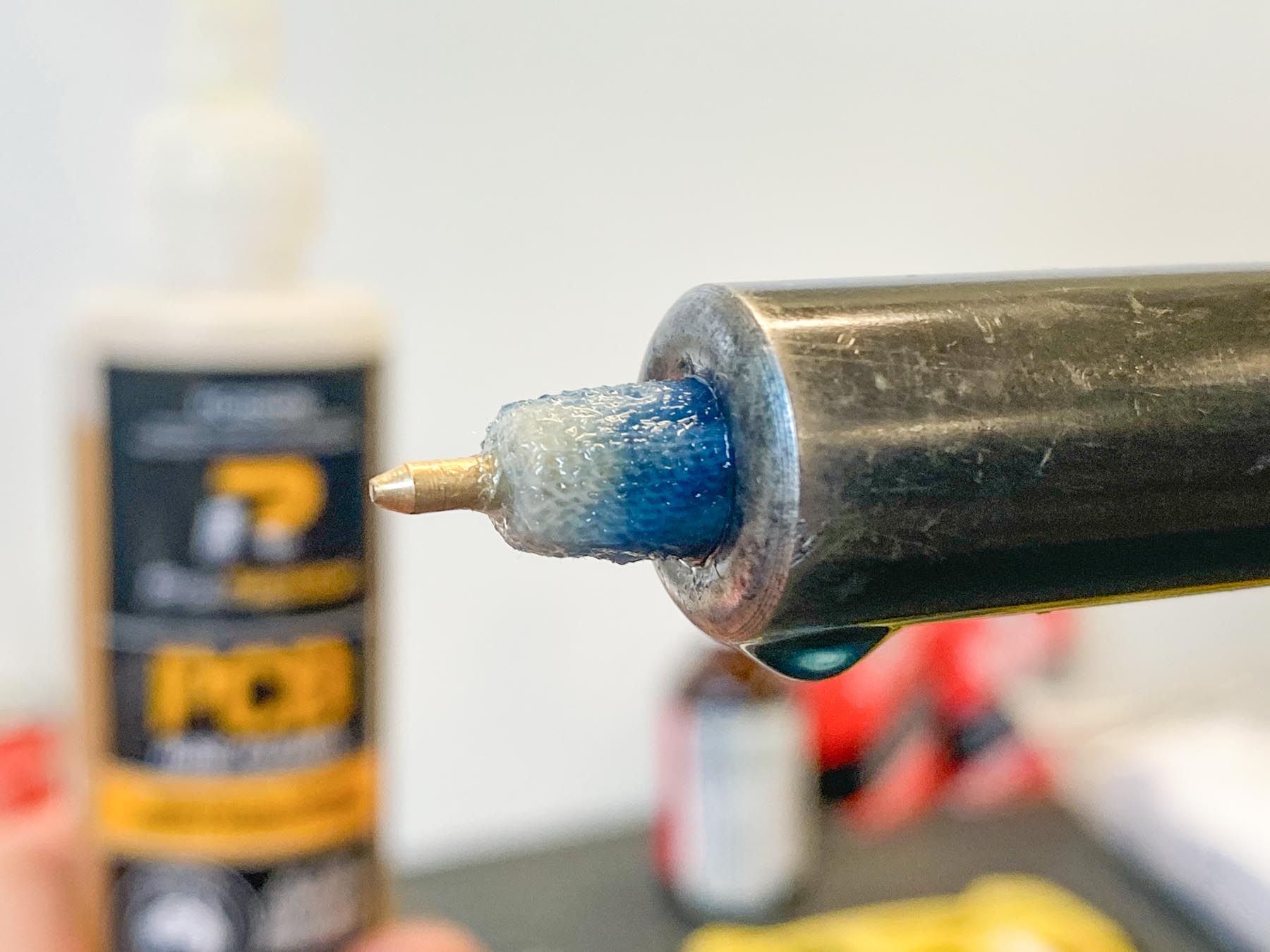There is no shortage of confusion and myths about barrels and how to treat them, from running in to wearing them out, so let’s get to the bottom of it.
Should you have to break in a barrel? I’ve never attempted it and cannot see any logical reason it. (See Nick Harvey’s advice here and here.)

BARREL CLEANING
I’m the first to acknowledge there are many ways to correctly clean a rifle barrel, and it may depend on how the rifle is used and the number of loads that are fired in it.
I do a lot of ammunition testing and so have developed a cleaning regime that also tends to keep the barrel cool.
Testing usually consists of a sighter to ensure I’m on paper and three rounds of three different powder loads. The three rounds are never fired in haste but at a moderately comfortable rate, noting the velocity for each individual round.
The barrel is then cleaned. The initial two patches are wet with brake cleaner or throttle cleaner to pick up all loose combustion residue in the barrel; thereafter, the barrel has either two patches of Bore Tech copper remover or a solid squirt of Hoppe’s No. 9 foam cleaner, both of which are effective.

After the foam cleaner, there will be a single patch of copper remover to clean up the last of the copper. Alternatively, you could use a second squirt of foam cleaner.
My gunsmith recently commented that the bore was in excellent condition — and this is after about 500 high-pressure rounds went through it.
The rifle, together with others, is stored with a 50/50 solution of Penetrene and Hoppe’s.
I am not telling you how to clean a barrel; it is simply my way, and it works for me.
BARREL HEAT
Excessive barrel heat has a severe impact on the life of a barrel. Letting a barrel get too hot from lots of quick shooting will cook it for sure.
You must limit your rate of fire to keep the barrel at a reasonable temperature.
One way out is to use two rifles alternatively. If you’re limited to one rifle, you must cool it down at intervals.
HARD CARBON
The other issue that affects barrel accuracy is hard carbon that builds up forward of the throat. Eventually, you will feel its presence through a tightening when you run a patch through the bore.
According to my research, there is no known liquid that will eliminate this buildup. As far as I know, you can only get rid of it by running bore paste, such as Iosso, over it several times.
One American barrel maker suggests you do this every 700 rounds, but I would suggest it is required more often.

Of course, load intensity will hasten the process. High intensity or ultra-high velocity will also contribute to eventual barrel failure.
There appears to be a trend towards separate liquids to attack either carbon or copper in a barrel; it seems to me to be a better option than a singular liquid.
FOULING SHOTS
If you are going to test different loads, patch out any residual long-term protection and foul the barrel with at least one shot before attempting to shoot a group.
Many will claim this only applies to benchrest barrels, but I have discovered it applies to many other rifles as well.
Clean them often and keep them cool for long barrel life!


0 Comments